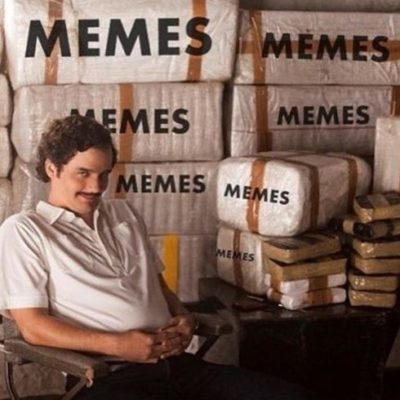Search
To search for an exact match, type the word or phrase you want in quotation marks.
A*DESK has been offering since 2002 contents about criticism and contemporary art. A*DESK has become consolidated thanks to all those who have believed in the project, all those who have followed us, debating, participating and collaborating. Many people have collaborated with A*DESK, and continue to do so. Their efforts, knowledge and belief in the project are what make it grow internationally. At A*DESK we have also generated work for over one hundred professionals in culture, from small collaborations with reviews and classes, to more prolonged and intense collaborations.
At A*DESK we believe in the need for free and universal access to culture and knowledge. We want to carry on being independent, remaining open to more ideas and opinions. If you believe in A*DESK, we need your backing to be able to continue. You can now participate in the project by supporting it. You can choose how much you want to contribute to the project.
You can decide how much you want to bring to the project.

The word folklore is associated with a specific culture, a type of society, always linked to the traditions, beliefs, dances or songs in which a collective identity is developed. One of the features of this type of cultural heritage, also known as intangible heritage, is its form of transmission, which is usually from parents to children. Likewise, it involves the need of partaking in these kinds of events so that they don’t get lost or fall into oblivion. Moreover, it isn’t easy to know the origins of many of them. One could say that in order to carry on with the patrimonial heritage of folklore, it is necessary to receive, copy and share.
If we get into the digital realm, folklore could be considered something Internet users are capable of creating with social ends. Not just that, it should also have similar characteristics to intangible heritage. Just by thinking a bit about them, it is easy to see that the Internet meme has them. An essential part of these creations is their form of survival, they need to be shared in order to be remembered and to reach as many users as possible. In many cases it is impossible to know their origin, who created it. Moreover, copying, pasting, changing and sharing is an essential part of a meme, because when it’s no longer transmitted, it becomes part of oblivion.
Folklore, always linked to a specific culture, in the digital part, often loses that connection with the physical place, for the Internet has no borders. Thus, the most viral meme in 2015 in many countries was “Confused Travolta”, where the image of Vincent Vega was placed in countless scenarios in which confusion was represented in a comical and fun way. An example closer in time that equally crosses borders is the popular “Africans dancing with coffin”, reproduced in countless occasions and countries as a result to the large number of cases and deaths caused by pandemic of the COVID-19. This is proof of how globalised both image and humour can be.
Besides that, the ways of laughing and the actions described in many of these creations seem to limit the extension and their spread by being linked to a specific society and to the description of the events that occur in it. If we take a look at the memes that we find on our mobile phones, many of them will be linked to the most recent political activity in our country. Also, in general, in the case of sending those memes again, they will only be forwarded to those who can understand them. Thus, those files are confined to the cultural and social activity of a region and, in addition, they are way larger in number than those transmitted worldwide.
Consequently, memes are capable of detailing the current moment with great clarity and humour. We could even use their potential to describe the history that’s happening nowadays. Furthermore, we can see what has been happening in politics in a region in recent years and the different political positions that we can find in the national scene through them. Television debates in which representatives of the different political parties take part in had in response, in a matter of minutes, hundreds of memes in social media. And this was happening with every event that we saw in the parliament or in the headquarters of the different parties. If we take a look at something more recent, every step that current governments have been taking
in the face of the pandemic has had a virtually immediate Internet response. And that’s because this form of cultural expression is simple and comfortable to manifest any type of thought through it.
This specific description of current events is made by the Internet users themselves, who do not only create them, but also share them, spreading them from phone to phone, easily carrying out the communication task. And that’s because these creations are an essential part of current popular culture for the mere fact of being popular, artistic and humorous creations that easily reach much of society.
Furthermore, the extension capabilities these creations have may be due to the connection we feel towards them. That’s why so many people save memes on their computers and to forward them in the right moment or simply as safeguards. Because our digital devices have become memory chests where we keep immense amounts of files that are left there as a photo album, but with the problem of limited life of today’s machines. Similarly, there are websites exclusively dedicated to share and save memes online, always connected and available to those who need to see them.
If we take all of this into account, we can say that digital folklore, especially memes, are a reflection of contemporary society and its ways of laughing. Thus, they can become one more legacy to show a future society how the current one was through humorous images. This is something that institutions have been taking into account for years. In 2003, UNESCO presented a letter about the preservation of digital heritage where they brought up the huge loss not safeguarding what’s merely digital would result in.
This could be the catalyst for many governments to start activating preservation strategies. Reality was a bit slower, although we can currently find strong actions to safeguard the content of the Internet. What’s more, the National Library of Spain, among others, is saving memes for their future study, files related to the country or news. They aren’t only digitalising documents for online consultation, to facilitate their reproduction and handling or for their preservation, but so what’s purely digital is also saved. Even so, there is still a long way to go, it’s a huge field, and to cover everything the Internet contains, even if it’s only that related to the Spanish territory, is a hard task even if a strong institution with means is to carry out that kind of safeguard.
We too can save them, show them, send them, change them and keep on laughing at them through time. Humorous files that only those who know the historical context in which they partake will understand. The humour and the culture of a specific time are tied to the people who live in it. If we were suddenly told to explain the first decades of the 21st century with an image to our descendants, I would definitely do so through a meme.

Graduated in Fine Arts from the University of Salamanca in 2014 and Master in Conservation and Restoration of Cultural Assets from the Polytechnic University of Valencia in 2016. For the last few years, she has been researching with Regina Rivas Tornés the ways to preserve the digital heritage, which has led them to develop several works and exhibitions. Co-author of the book “Digital folklore and politics in Spain” downloadable from salviral.net.
"A desk is a dangerous place from which to watch the world" (John Le Carré)